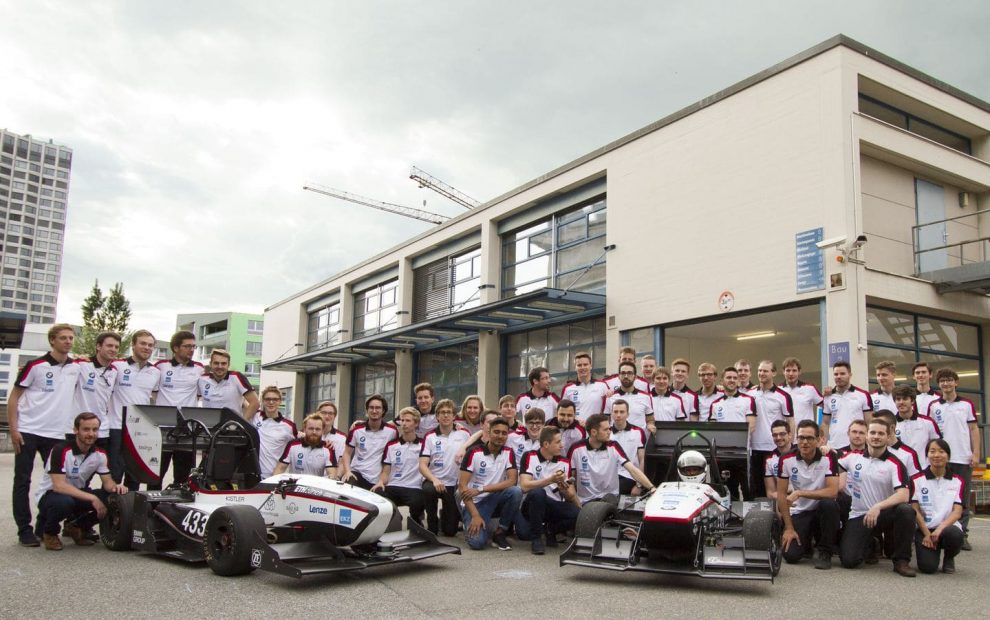Whispering bolides ready for the new season
AKADEMISCHER MOTORSPORTVEREIN ZÜRICH The students of ETH Zurich and Lucerne University of Applied Sciences and Arts are starting the coming season with two whispering cars. The all-wheel drive electric racing car "pilatus" is completely new. The already successful "flüela" (AutoSprintCH reported) has been converted so that it can be driven without a pilot. At the rollout event at the main sponsor EKZ in Dietikon yesterday, the two "whisper cars" were [...]

The two "whispering cars" were presented to the project's sponsors, industry representatives and the media for the first time yesterday at the rollout event at main sponsor EKZ in Dietikon. Formula Student is the world's largest competition for engineers. It is held annually at various locations around the world. The winner is not the team with the fastest car, but the one with the best overall package of design, racing performance, careful financial planning and convincing sales arguments.
Own E-Class
A separate class for electric vehicles has existed since 2010. The aim is to equip the next generation of engineers for the future technology of electric drives and to drive the innovation process forward. The focus here is primarily on ecological aspects. As the AMZ has been able to prove time and again in recent years, the fastest electric vehicles are already on a par with the best combustion engines.
For the first time without a driver
In 2017, the series is following the latest technical trends and is holding the "Formula Student Driverless" competition for the first time. The first autonomous racing car in Switzerland is able to navigate through a course marked by road cones without external intervention. Leiv Andresen from AMZ: "Both the LiDAR placed at the front of the vehicle and the 3D stereo camera system developed in-house make it possible to recognize the surroundings. Intelligent algorithms use this data to generate driving commands directly to the vehicle within fractions of a second. A mechanical emergency braking system can be triggered at the touch of a button, thus ensuring the necessary safety." The car is set to compete against international rivals at the first race in this class at the Hockenheimring in August.
Adaptive chassis
This is also a premiere of a particularly interesting kind: the new Formula Student Electric racing car "pilatus" has an adaptive, hydraulic chassis that has never been seen before in this form in racing. The tires were developed in cooperation with Continental and adapted to the needs of the vehicle and the competition. The "pilatus" is powered by four electric wheel hub motors, which deliver a total output of 200 hp - and that with a vehicle weight of just 168 kilos! Leiv Andresen: "The resulting power-to-weight ratio puts even super sports cars like a Bugatti Chiron in the shade. To transfer the power efficiently to the track, a complete aerodynamics package and various driving dynamics control systems were developed." The racing car will compete against international rivals in four races in Hungary, Austria and Germany in July and August.
Start with obstacles
The planned driving demonstration of the "flüela driverless" was unfortunately somewhat clouded by the reality of prototype development: after a successful test drive two hours before the event, a defective cable led to an interruption in communication with the battery. Unfortunately, this meant that it was not possible to carry out the planned autonomous drive-up. So there is still a lot to do before the first race in August. (Author: Stefan Donat)









